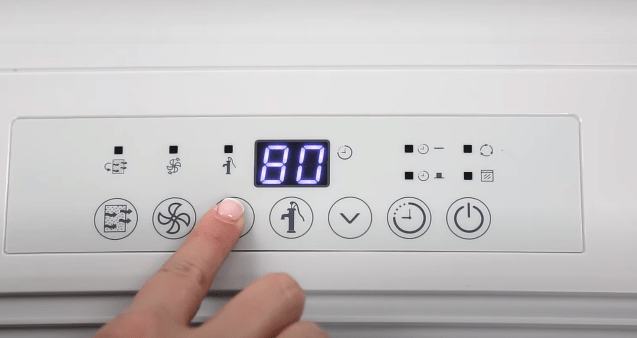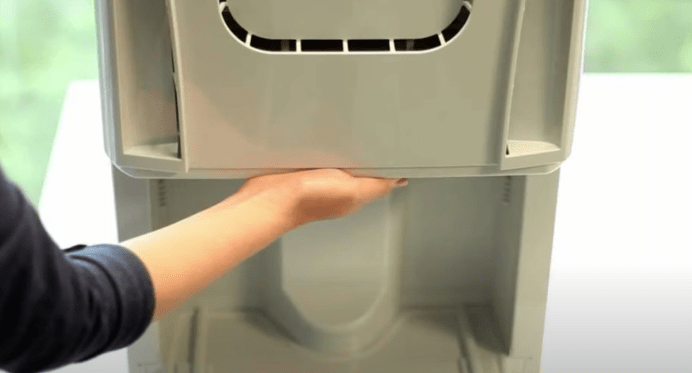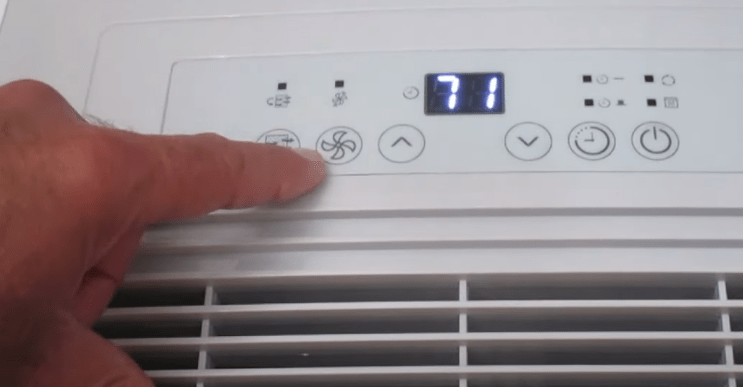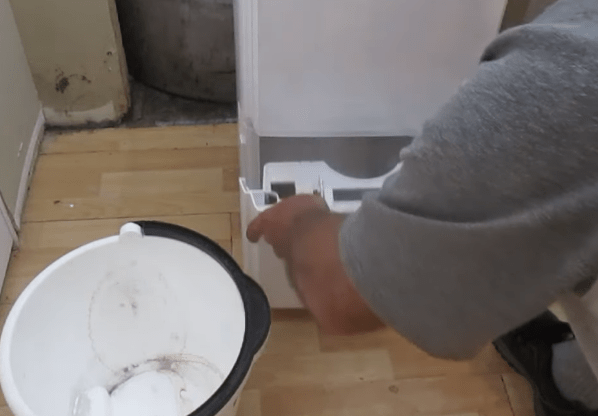In the hot summer, when the sun makes your home really hot, there’s one cool place—your basement. But when you go down there, you might find something you don’t want: too much dampness. That’s where we start our journey, thinking about you and your basement.
Hi, I’m Mannan Wasif, your friendly guide in the world of dehumidifiers and humidity control. I’m here to help you with the ins and outs of keeping your basement just right. We’ll figure out how to balance the moisture and make your basement a comfortable place when it’s scorching outside.
Now, let’s get to the heart of our discussion: what to set dehumidifier at in basement in summer. I’ll guide you through the steps to make sure your basement stays dry and keeps you feeling good.
So, let’s start this journey to a healthier, cozier basement.
What to set dehumidifier at in basement in summer?

But what exactly should you set your dehumidifier to during the summer months? Well, it turns out that the great outdoors holds the answer. Take a gander at the chart below, which provides insight into recommended humidity levels based on the outdoor temperature, assuming an ambient temperature of 70°F.
| Outdoor Temperature | Proper Indoor Humidity Level (At 70°F) |
| Over 50˚F | Not Exceed 50% |
| Between 20˚F to 50˚F | Not Exceeding 40% |
| Between 10˚F to 20˚F | Not Exceeding 35% |
| Between 0˚F to 10˚F | Not Exceeding 30% |
| Between -10˚F to 0˚F | Not Exceeding 25% |
| Between -20˚F to -10˚F | Not Exceeding 20% |
| Below -20˚F | Not Exceeding 15% |
As the mercury dips and outdoor temperatures take a plunge, it’s essential to note that the recommended indoor humidity level should follow suit. Why? Well, it all boils down to the curious case of condensation. You see, as the outside temperature drops, basement windows become prime candidates for condensation formation. To steer clear of this, it’s imperative to maintain a low indoor humidity level.
Here’s the lowdown: Mold, the uninvited guest of many basements, thrives when condensation occurs. Most molds require water to kick-start their shenanigans. So, here’s the clever twist—you can set your humidifier’s humidity level a tad higher, depending on your geographical location. In the summer, when temperatures soar above 50 degrees Fahrenheit in most areas, you can safely settle between 40% and 50% humidity, safely below the upper limit.

Now, let’s dive deeper into the realm of humidity levels. A humid basement often sends out distress signals like musty odors or telltale condensation on walls and floors. These signs are a clear indication that your basement may be overly humid. But don’t fret, it’s an issue you can easily tackle.
- First off, ensure your basement breathes by keeping those windows open whenever you can. Enhance airflow with a trusty window fan—it’s like a breath of fresh air for your space.
- Next on the agenda: seal the deal. Humid air can sneak in through sneaky gaps around doors and windows, so inspect your basement diligently and seal any openings with caulk or weatherstripping.
- If you’re up for a little climate control, it’s in your hands. Running your basement’s air conditioner or furnace is a sneaky trick. Notice how humidity levels dip as the air becomes drier, pulling moisture from your walls and floors.
- But here’s the real game-changer—a dehumidifier. This nifty device can work wonders by whisking excess moisture out of the air. The key is to maintain it diligently. Empty the reservoir regularly, and keep the dehumidifier filter, bucket, and coil squeaky clean to prevent mold from making itself at home.
With these savvy steps in your toolkit, your basement can stay comfortably dry and inviting throughout the scorching summer months.
Tips to make the best use of a dehumidifier in hot summers:
As summer’s scorching embrace envelops us, it awakens the inner chef in many of us. However, this season also brings forth relentless sweating, the need for frequent showers, and a surge in humidity levels.
The rising water vapor in the air exacerbates these discomforts. But fear not, for the solution lies in harnessing the potential of a trusty dehumidifier. Yet, setting up and using a dehumidifier in the sweltering heat can be a bit of a puzzle.
Let’s embark on a journey to unveil the secrets of maximizing your dehumidifier’s performance during hot summers.
1. Set up the dehumidifier to a 50% range

Achieving the ideal indoor humidity level is a key goal. To bask in comfort, aim for a humidity range between 30% and 50%. In the midst of a hot and humid summer, targeting a 50% humidity level becomes paramount.
2. Monitor the quantity of water collected

Keeping a vigilant eye on the water collected in your dehumidifier’s tank is a smart move. Daily monitoring allows you to stay in control of your indoor moisture levels. An empty tank signals an oxygen-scarce environment.
Conversely, if you find yourself emptying the tank frequently, it’s a clear indicator of excess moisture in the air. In such cases, it might be wise to invest in a larger dehumidifier with enhanced moisture-slaying capabilities.
3. Turn on the air conditioner

Just as heaters and dehumidifiers make the perfect pair during winter, dehumidifiers and air conditioners are summer’s dynamic duo. Running your air conditioner alongside your dehumidifier alleviates the burden on the latter by cooling the air. In the heat of summer, it’s a winning strategy to maintain your home’s coolness and dryness.
For optimal results, set your AC to a refreshing 78 degrees Fahrenheit when using a dehumidifier during the summer months.
4. Clean the dehumidifier regularly

Dehumidifiers can become dust and dirt magnets, especially during the summer’s humidity combat. Regular maintenance is the name of the game. Make it a habit to clean your dehumidifier frequently, ensuring it’s in peak condition to battle the relentless summer moisture.
Other Strategies For Reducing Basement Humidity
Here are the strategies for reducing basement humidity in summer:
- Moisture-Absorbing Materials: Moisture-absorbing materials such as desiccants or silica gel can play a crucial role in lowering basement humidity levels. These substances work by absorbing excess moisture from the air, effectively reducing humidity. Strategically placing containers filled with moisture-absorbing materials around the basement, especially in areas prone to dampness or condensation, can help in this regard. It’s important to monitor these materials and replace them as needed since they can become saturated over time.
- Insulating Walls: Properly insulating the walls of your basement can significantly impact both temperature and humidity control. Insulation acts as a barrier, preventing warm, moist air from outside from infiltrating the cooler basement interior. To enhance the effectiveness, consider insulating both exterior and interior walls, as well as areas around windows and doors to prevent condensation and heat transfer. Opt for insulation materials that are resistant to moisture, such as closed-cell foam board or foam spray insulation.
- Installing Exhaust Fans: Exhaust fans are a practical solution for removing humid air and improving ventilation in the basement. Installing them in areas where moisture tends to accumulate, such as bathrooms or laundry rooms connected to the basement, can effectively mitigate humidity issues. It’s essential to ensure that the exhaust fans are vented properly to the exterior of the house to prevent the expelled humid air from re-entering the basement.
- Sealing Basement Cracks and Leaks: Identifying and sealing any cracks or leaks in the basement walls or foundation is vital to prevent moisture ingress from the outside. These openings can allow water and humid air to infiltrate the basement. Use waterproof sealants or caulk to close gaps and cracks effectively, ensuring a dry and humidity-controlled environment.
- Using a Basement Dehumidifier: In addition to the aforementioned strategies, using a dedicated basement dehumidifier remains one of the most efficient methods for controlling basement humidity. A quality dehumidifier can systematically remove excess moisture from the air, maintaining optimal humidity levels and preventing the growth of mold and mildew in your basement.
- Proper Ventilation: Adequate ventilation is essential in your basement to combat humidity. Open windows and use fans to circulate the air, effectively removing stagnant, humid air and replacing it with fresh, drier air from outside. To prevent rainwater from entering through basement windows while still allowing ventilation, consider using window wells and window covers.
Common Mistakes Homeowners Make
The following are the common mistakes homeowners make when dealing with basement humidity and how to avoid them:
Common Mistakes
The following are common mistakes that people make:
- Ignoring the Issue: One of the most common mistakes is ignoring or underestimating high humidity levels in the basement. Some homeowners may assume it’s a minor problem that will go away on its own, but neglecting the issue can lead to mold growth, structural damage, and health concerns.
- Not Addressing the Root Cause: Instead of tackling the root cause of basement humidity, some homeowners try to address the symptoms. For example, they may constantly run a dehumidifier without addressing issues like poor insulation or water leaks.
- Inadequate Ventilation: Poor ventilation is a frequent mistake. Homeowners may keep basement windows and doors closed, leading to stagnant air and increased humidity. Inadequate ventilation prevents fresh air from circulating and drying out the space.
- Using the Wrong Dehumidifier Size: Choosing an incorrectly sized dehumidifier is another mistake. An undersized unit won’t effectively reduce humidity, while an oversized one may lead to excessive energy consumption. It’s crucial to select the right capacity based on the size and humidity level of your basement.
- Neglecting Regular Maintenance: Some homeowners forget to perform routine maintenance on their dehumidifiers. This can lead to decreased efficiency and potential breakdowns. Cleaning the filter, checking the drainage system, and emptying the collection bucket regularly are essential tasks.
How to Avoid These Mistakes
Here are some solutions to avoid these mistakes:
- Monitor Humidity Levels: Invest in a hygrometer to regularly monitor humidity levels in your basement. If you notice consistently high readings (above 50%), take action promptly to address the issue.
- Identify and Fix the Source: Determine the root cause of the humidity problem. Inspect for water leaks, cracks, or poor insulation. Fixing these issues will be more effective than simply using a dehumidifier.
- Promote Ventilation: Ensure your basement has proper ventilation. Open windows and doors when the weather allows, and consider using exhaust fans to improve air circulation. This helps prevent stale, humid air from accumulating.
- Choose the Right Dehumidifier: Calculate the square footage of your basement and choose a dehumidifier with an appropriate capacity. Consult the manufacturer’s guidelines to match the unit’s size to your basement’s needs.
- Perform Regular Maintenance: Stick to a maintenance schedule for your dehumidifier. Clean or replace the filter as recommended, empty the collection bucket, and check the drainage system for clogs. Keeping the unit in good condition ensures it operates efficiently.
- Consider Professional Help: If humidity issues persist or are severe, consider consulting a professional contractor who specializes in basement waterproofing and insulation. They can identify and address structural issues effectively.
Conclusion
In the battle against summer basement humidity, knowledge is your greatest weapon. By setting your dehumidifier to the right levels, monitoring moisture, and adopting smart strategies, you can transform your basement into a comfortable, mold-free oasis. Don’t forget to steer clear of common mistakes and maintain your dehumidifier to enjoy a cool, dry, and inviting space all summer long.

He is a mechanical engineer & our expert team member with over four years of experience who provides comprehensive and informative guides on various home improvement topics. From DIY projects to professional installations, he strives to give readers the knowledge and tools they need to make informed decisions and successfully complete their home improvement projects.
His goal is to empower homeowners to create the home of their dreams, while also increasing the value and functionality of their property. Whether you’re a first-time homeowner or a seasoned renovator, he has something for everyone.
